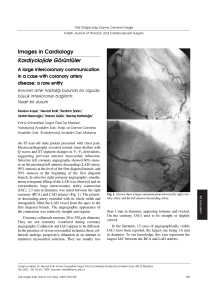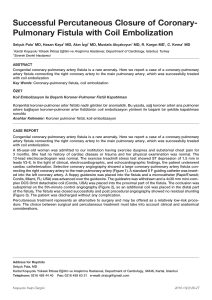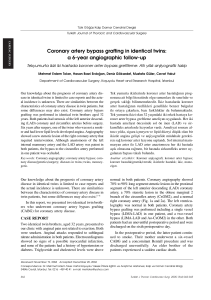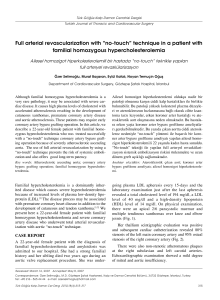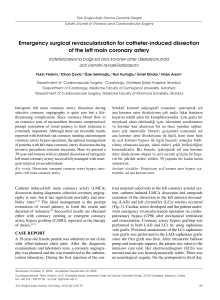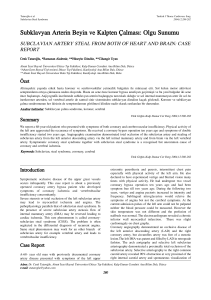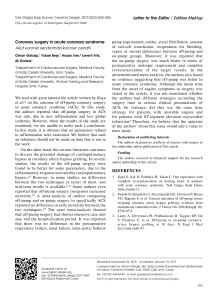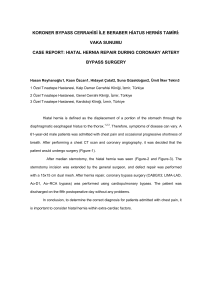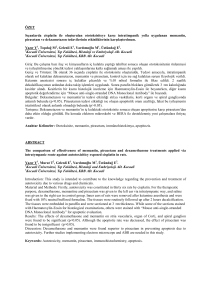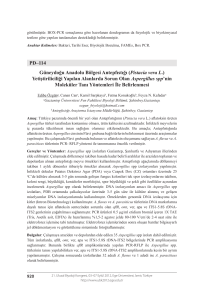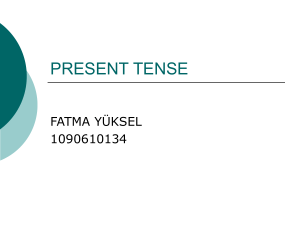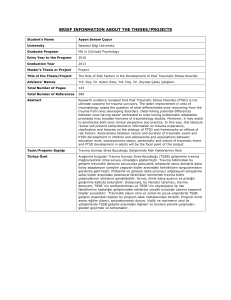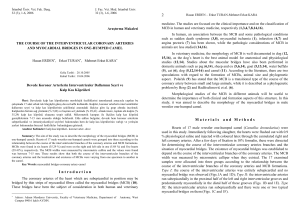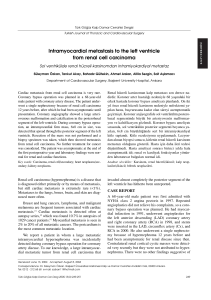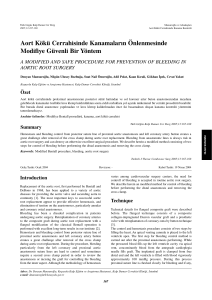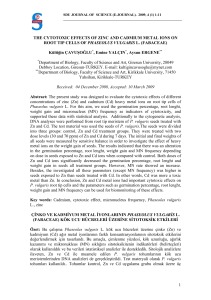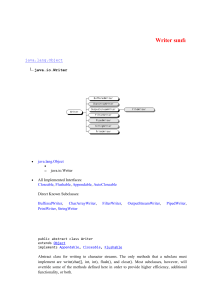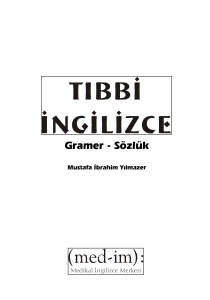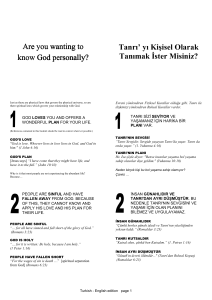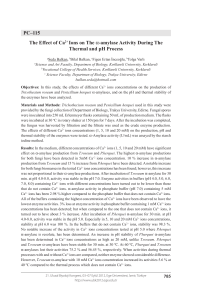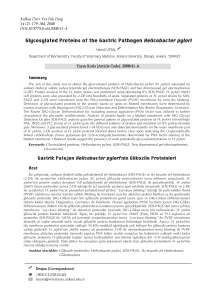253-254 Mustafa Yildiz.indd
advertisement
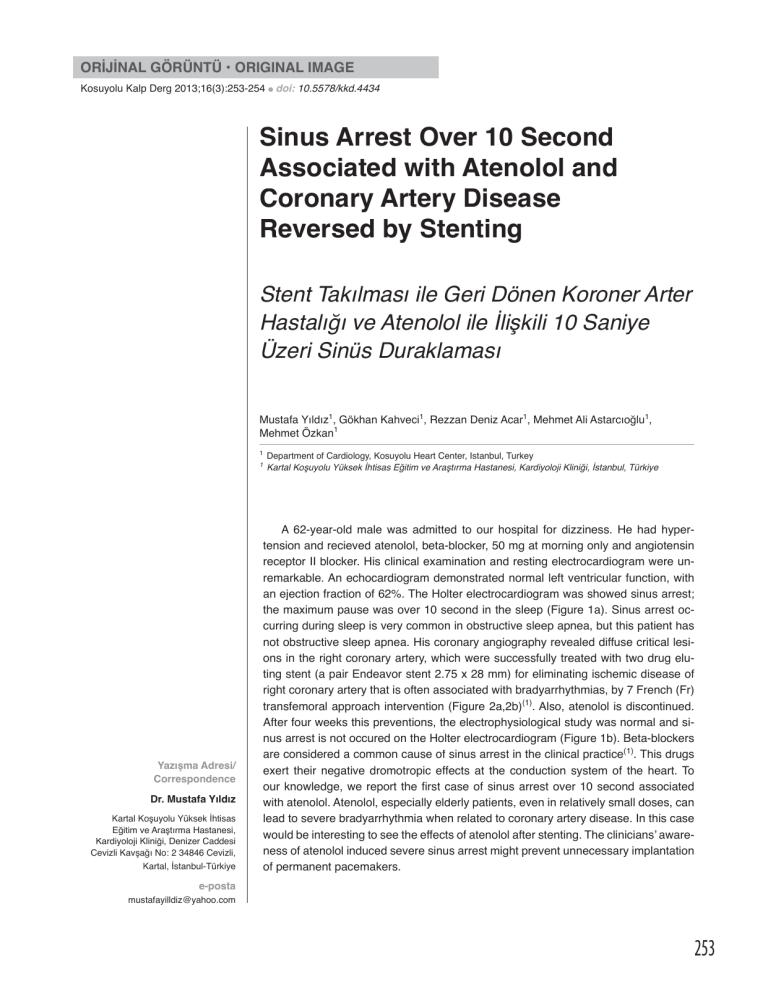
ORİJİNAL GÖRÜNTÜ • ORIGINAL IMAGE Kosuyolu Kalp Derg 2013;16(3):253-254 ● doi:: 10.5578/kkd.4434 Sinus Arrest Over 10 Second Associated with Atenolol and Coronary Artery Disease Reversed by Stenting Stent Takılması ile Geri Dönen Koroner Arter Hastalığı ve Atenolol ile İlişkili 10 Saniye Üzeri Sinüs Duraklaması Mustafa Yıldız1, Gökhan Kahveci1, Rezzan Deniz Acar1, Mehmet Ali Astarcıoğlu1, Mehmet Özkan1 1 1 Yazışma Adresi/ Correspondence Dr. Mustafa Yıldız Kartal Koşuyolu Yüksek İhtisas Eğitim ve Araştırma Hastanesi, Kardiyoloji Kliniği, Denizer Caddesi Cevizli Kavşağı No: 2 34846 Cevizli, Kartal, İstanbul-Türkiye Department of Cardiology, Kosuyolu Heart Center, Istanbul, Turkey Kartal Koşuyolu Yüksek İhtisas Eğitim ve Araştırma Hastanesi, Kardiyoloji Kliniği, İstanbul, Türkiye A 62-year-old male was admitted to our hospital for dizziness. He had hypertension and recieved atenolol, beta-blocker, 50 mg at morning only and angiotensin receptor II blocker. His clinical examination and resting electrocardiogram were unremarkable. An echocardiogram demonstrated normal left ventricular function, with an ejection fraction of 62%. The Holter electrocardiogram was showed sinus arrest; the maximum pause was over 10 second in the sleep (Figure 1a). Sinus arrest occurring during sleep is very common in obstructive sleep apnea, but this patient has not obstructive sleep apnea. His coronary angiography revealed diffuse critical lesions in the right coronary artery, which were successfully treated with two drug eluting stent (a pair Endeavor stent 2.75 x 28 mm) for eliminating ischemic disease of right coronary artery that is often associated with bradyarrhythmias, by 7 French (Fr) transfemoral approach intervention (Figure 2a,2b)(1). Also, atenolol is discontinued. After four weeks this preventions, the electrophysiological study was normal and sinus arrest is not occured on the Holter electrocardiogram (Figure 1b). Beta-blockers are considered a common cause of sinus arrest in the clinical practice(1). This drugs exert their negative dromotropic effects at the conduction system of the heart. To our knowledge, we report the first case of sinus arrest over 10 second associated with atenolol. Atenolol, especially elderly patients, even in relatively small doses, can lead to severe bradyarrhythmia when related to coronary artery disease. In this case would be interesting to see the effects of atenolol after stenting. The clinicians’ awareness of atenolol induced severe sinus arrest might prevent unnecessary implantation of permanent pacemakers. e-posta [email protected] 253 Sinus Arrest Over 10 Second Associated with Atenolol and Coronary Artery Disease Reversed by Stenting Stent Takılması ile Geri Dönen Koroner Arter Hastalığı ve Atenolol ile İlişkili 10 Saniye Üzeri Sinüs Duraklaması A B Figure 1a. The Holter electrocardiogram was showed sinus arrest; the maximum pause was over 10 second, 1b: After four weeks, sinus arrest is not occured on the Holter electrocardiogram. A B Figure 2a, 2b. The coronary angiography revealed diffuse critical lesions in the right coronary artery, which were successfully treated with two drug eluting stent (a pair Endeavor stent 2.75 x 28 mm). REFERENCE 1. 254 Zeltser D, Justo D, Halkin A, Rosso R, Ish-Shalom M, Hochenberg M, et al. Drug-induced atrioventricular block: prognosis after discontinuation of the culprit drug. J Am Coll Cardiol 2004;44:105-8. Kosuyolu Kalp Derg 2013;16(3):253-254
